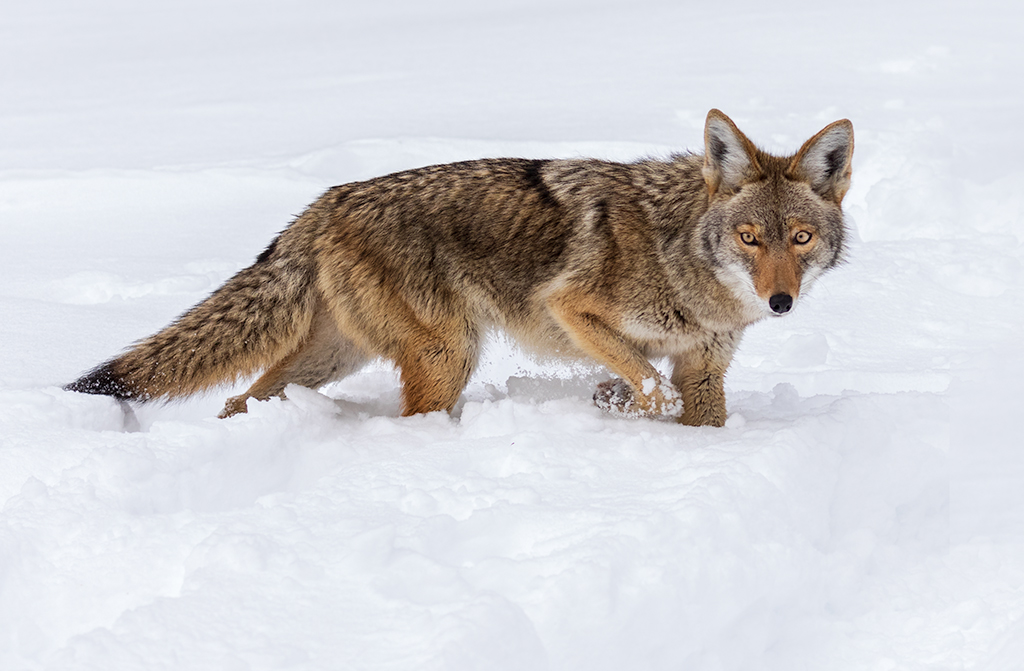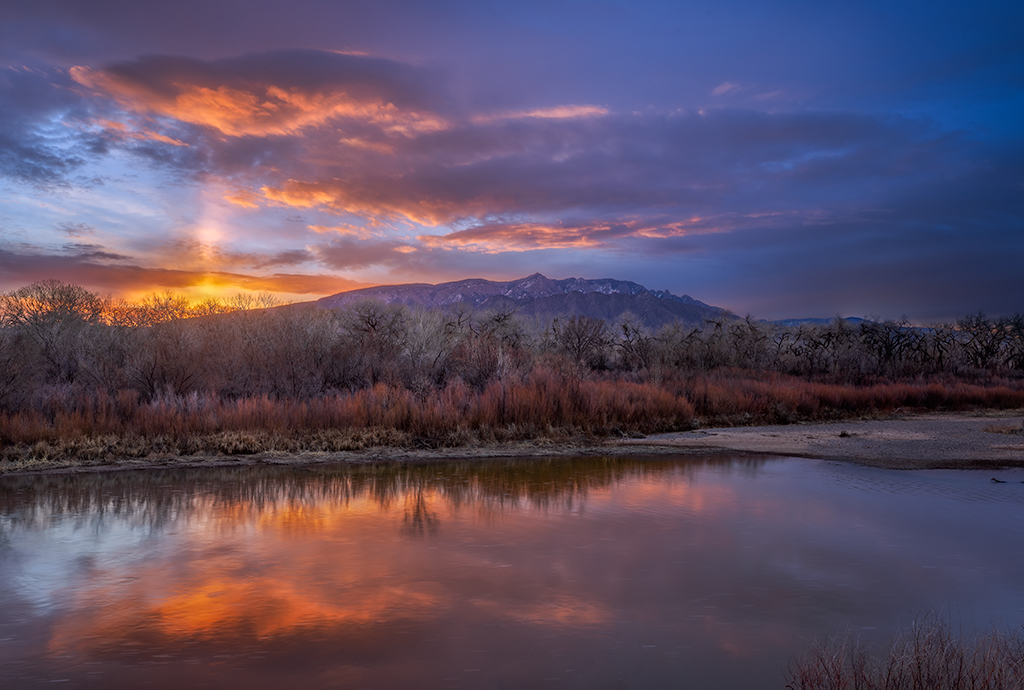What if approaching an empty nest offers an opportunity to rediscover your love of nature? Would you take the chance to take your photo gear outside? And would you embrace the beauty of nature and relive your deep-felt love for nature that you acquired during your childhood?
To get an answer to that question, I interviewed the American nature photographer Pam Dorner, highly commended in the category “Mammals” at the NPOTY contest 2021. As a young girl, she became fond of the natural world, but as a mother, her adult life has been centered on her boys and was filled with their activities, like sports. The only thing Pam Dorner did for herself during that time was training and running marathons. Between work, her boys, and running, she didn’t have time for other pursuits.

It was when her oldest son graduated, Pam Dorner decided this was the moment to ‘break free’ and find something just for herself. The problem was she didn’t know what that something was. Not long after, her sister-in-law Denise gave her a camera, hoping Pam could learn how to use it so she would have a buddy to photograph with. Pam took a weekend of lessons and that was the moment she realized photography was her new passion. This was only five years ago and she has been successful in various contests ever since. Now is the time to get to know this passionate nature photographer, whose love for nature resonates in every word she speaks.
Pam Dorner lived her first seven years in Asheville, North Carolina, in a house in the mountains. These years brought her lots of happy memories like exploring the trails near the house, going down to the creek looking for crawdads and other critters. After seven years, her family moved to Texas. Luckily for Pam, they lived outside of the city, offering her the chance to explore the mesas near home. Nowadays Pam lives in Rio Rancho, New Mexico. Her house has a view of the Rio Grande River and the Sandia Mountains. Even though she has lived here little over 20 years, she never tires of the view or takes it for granted. Its beauty still amazes her every day.

Black bear cub in the Smokey Mountains, North Carolina, Pam Dorner
Inspiration
“My parents loved to travel and always encouraged me to go outside. As a little girl I had my first contact with a bear while sitting on my father’s shoulders in the Smoky Mountains. The National Geographic magazines they collected were a great inspiration to me. I spent hours and hours perusing the photos, just daydreaming of visiting some of the places in the magazines. I was reminded of that childhood wonderment when out shooting for the first time in the bosque, the tree lined area on the Rio Grande River. I remember being taken aback by the beauty that night and was so happy – sounds corny but I felt like my soul was lifted. That is the only way I know how to describe it, just complete sense of peace. I knew right then and there that I wanted to pursue photography. It brought me back to my childhood, firing up the love of the natural world and desire to see those places for myself.
As a little girl, my parents gave me a print of a lynx for my bedroom. I used to look at that beautiful portrait of this wild cat and imagine seeing one. That dream came to fruition after coming across an incredible lynx portrait by photographer Kevin Pepper. I couldn’t sign up fast enough for his workshop in the Yukon and months later I was sitting in the snow face to face with a beautiful lynx. That trip spearheaded many other adventures and experiences that in my wildest dreams I would never have imagined I’d have the courage to do. By the way, I still have that print of the lynx my parents gave me.

Face to face with a beautiful Lynx, Pam Dorner
Luckily, I don’t have to travel far to be inspired by nature. Since I live so close to the river, we are blessed to see wildlife like coyotes, sandhill cranes, eagles, geese, roadrunners, owls, bobcats, etc. My husband even came face to face with an elk last year, something I’ve never seen near my home in all my years of hiking and running the trails along the river.
Just a few hours from home is Bosque del Apache National Wildlife Refuge. Thousands of sandhill cranes and snow geese winter there every year and egrets roost there in the summer. It is such a beautiful place and a treasure for New Mexico. I can visit the refuge and see something different every time I go. I saw my first bobcat a few years ago. A small cat ran out in front of my car while driving one of the loops. I stopped and got out thinking it was a house cat from a nearby town. The small cat was running up and down the other side of road just ahead. Suddenly, I heard crunching leaves a few feet from me. There stood a mama bobcat and I quickly realized the other was her kitten. She walked about 10 feet from me. At that point, I was beside my car between her and the kitten. Then she sat down and the kitten followed suit. It was an incredibly calm special moment. I took turns photographing her and the kitten until another car came around the bend and scared both cats away. I am so grateful for that experience as well as many others at the refuge. Therefore, Bosque del Apache will always hold a special place in my heart.”

Bosque del Apache, Pam Dorner
Inspiring photographers
“There are many great photographers and I admire especially those that take pictures that stick in your mind, photographers that make the connection between the viewer and nature. Daniel Kordan is a great example. I love his photos of unusual landscapes and trees of the world. When I think of his work, I picture white glaciers with a red sailboat as seen in many of his images.
Another photographer with inspiring work is Marc Muench. His photos make me want to book flights to amazing locations all over the world. His knowledge of light, color and composition comes through in every photo. I love his Braided river images, Bristlecone pine, and aerial photography. He is also an amazing wildlife photographer to boot!
Wayne Suggs is an incredible photographer from New Mexico. He has a distinctive style. When you see one of his images, you know who took it. His images are so sharp and usually so close to the subject matter that you feel you can reach out and touch them. He is also such a positive role model, actively protecting the landscape he photographs. His love of teaching is apparent to anyone who knows him.
Matt Meisenheimer is a relatively young photographer, but so talented. His images have an ethereal feel and showcase his ability to find unique compositions in remote areas.

Bear 399 and her four cubs, Pam Dorner
Furthermore, I admire Thomas Mangelsen’s wildlife photography, especially in regard to the animals of the Tetons, such as the famous Bear 399. He has followed her journey for 15 years, photographing her in a very respectful way. I had a chance to shoot near him when Bear 399 had four cubs at 26 years old. I admire that he uses his platform and social media presence to help protect these animals and give them a voice with his photography.”
Signature
“My photography adventure started only five years ago and I’m learning every day. I don’t know if I have developed a signature yet in this relatively short period. I love all subjects, especially when photography involves the unexpected. For instance, a few years ago on my last day in Katmai, Alaska, I heard there was a sow with cubs at a nearby lake. Because I had a few hours before my flight, I headed to the lake in hopes of photographing bear cubs. When I arrived, I saw the mother bear was fishing, while her two cubs played on the beach. I kept a safe distance so as to not disturb the bear family. It was exhilarating being all alone in Alaska for a few moments photographing bears. I felt no fear but a healthy respect for the bears and I hope that they sensed this. Same with the bobcat mom with her kitten that I mentioned before.

Alone with the bears, Katmai, Alaska, Pam Dorner
For me, ‘experiencing the moment’ is the most important. I try to express some of that reverence for the natural world in my photography. I am still looking for what makes a photo ‘Pam’s’ but haven’t found that signature yet. I would be happy if the love and respect I feel for nature became my signature.”
Preparation
“My preparation for a photo trip depends. When I go to a location on my own, I will google location logistics upfront and have a good understanding of wildlife sightings and habitat. When I go with a professional, I trust that person to get me where I need to go for an amazing shot. If you set the expectations too high, it can be disappointing and ruin the trip. I want to be pleasantly surprised. I do prepare gear wise, think about what lenses to bring, and of course have a back-up camera on hand.”

Bobcat mom, Pam Dorner
Ambition
“I am driven by moments. I want to continue to have magical encounters whether it be with a Grizzly in the wild or a beautiful sunset on the river. Nature photographers spend countless hours outside usually seeing nothing and then all of a sudden, there is movement and you make a connection whether it be a bird, bear or bobcat… it doesn’t matter…. it is magical. I want to share those experiences with others that for whatever reason might not be able to get to those places themselves.
That personal connection with nature is what fills my soul. I hope, through sharing that love, that others will feel the same wonderment for the natural world, and the desire to protect it! Wildlife and landscape are valuable resources, and should be treated as such to protect them for next generations. Look at the rhino population–we have decimated them. I photographed a young Grizzly in the Tetons last year. Weeks later, someone decided this beautiful Grizzly, on the endangered species list was surplus, and tragically shot and killed. There should be no such thing as a surplus Grizzly bear!

No such thing as a surplus Grizzly bear!, Pam Dorner
We need to learn to coexist with the wildlife that we share the world with. Like for instance coyotes. Some people in my area don’t like coyotes but they are an important keystone species playing a critical role in keeping our natural areas healthy. I’m proud of my state for ending coyote killing contests. Science shows that this type of predation management doesn’t work beside the fact that it is cruel. Much of this disdain for coyotes is rooted in fear and misinformation. Understanding why animals act the way they do helps to lessen that fear. With my photography, I hope to bridge the distance between wildlife and the viewer.
My internal mantra for photography is do no harm. As a photographer, I believe we have an obligation to the subjects we are shooting, whether it be an animal, flower or petroglyph. We need to protect these special areas and creatures for future generations.”

Coyote in Yosemite, Pam Dorner
Photography contest
“I think it is important to participate in photography contests. First of all, when you have an amazing experience, you naturally want to share. Secondly, there are so many talented photographers out there, it’s challenging to get your work seen. With so many on social media vying for attention, even if someone follows your work, that person may not see your image posted because of an algorithm. That makes it hard for a small fish in a big pond to get that story or photo out there.
Photo competitions like NPOTY can bridge that gap and give you a platform to share a special moment in time. Also, I think it’s harder for female nature photographers to be taken seriously in such a male dominated field. There has been headway in that area with amazing photographers like Christina Mittermeier and Melissa Groo, but tough for someone like myself, who has been doing photography for a relatively short time. A contest photo is judged based on that moment in time. Did it connect, did it move someone? Not who shot the image.

Bobcat kitten, Pam Dorner
I am definitely planning to participate in the NPOTY 2022 edition. I am a procrastinator, putting off everything until the last minute. I once entered a competition in New Mexico where I shot my entry on the last day of the competition.
To photographers who are thinking about participating I would say just go for it! Don’t get intimidated by the number of participants, believe in your work. Keep in mind that it is fine if a jury doesn’t connect with your image, in the end someone will.”
Social Media
“For me the benefits of being active on Social Media like IG and FB is a combination of getting my name out there as well as connecting with other photographers. I especially love IG cause its about the photo. FB is more about keeping up with friends and sharing experiences. Share what you love.”

Sandhill crane refection, Pam Dorner
Covid-19 effects
“It may sound odd but I was actually really productive during the pandemic. It forced me to slow down and learn key fundamentals and processing techniques as well as it allowed me to see the beautiful area where I live in a new light. One of the groups I follow, Muench Workshops, had weekly assignments during the pandemic. They have a group of extremely talented pros and they would show examples of different photography techniques and challenge viewers to create or share similar images. Topics like black/white, high key, using shadows and then their pros would critique your images to help you improve. It’s so hard sometimes to get constructive feedback. I really enjoyed these assignments, they gave me a sense of purpose during such a hard time, they helped me think differently about composition plus it was so much fun to collaborate with a group of like-minded individuals. One of my images from those assignments, a photo of a sandhill crane reflection, went on to win first place in the wildlife category of a major New Mexico publication. It was a photo I didn’t even know I had until I slowed down and looked back at older work and realized the value of that moment in time.”
At the end of the interview, I asked Pam Dorner the question: “if you could ask another nature photographer one question, who would that be and which question would you ask?”
It didn’t take Pam much time to answer: “Ansel Adams if he were still alive. He is a famous landscape photographer and environmentalist, known for his black and white images of the American West. I would want to know what his thoughts are on today’s digital technology and ability of post processing. I would also like to know what he looked for when composing images.”

View on the Rio Grande River, Pam Dorner












